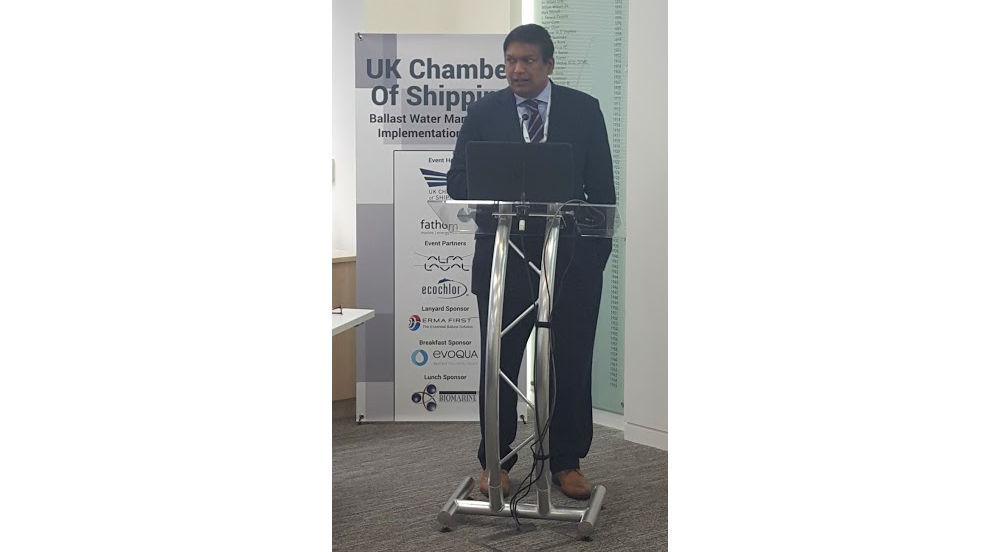Sidharth Kulbhaskar, Ship Repair and Maintenance Manager, Shell Shipping Maritime took to the floor during the first of three London Ballast Water Forums, hosted by the UK Chamber of Shipping in partnership with Fathom Maritime Intelligence, to address the issues and considerations of ballast water treatment systems (BWTS).
CAPEX and OPEX costs remain on of the highest considerations when choosing the best system for a ship owners’ operations. Guarantees, reputation, marine experts, services, financial status of the company all must be considered carefully, while learning from previous installations is key, Mr Kulbhaskar stated. Understanding how newbuild ships have functioned alongside a BWTS is important. To date ultraviolet (UV) BWTS using filtration and electrochlorination have shown to be the most popular.
One of the biggest challenges facing the industry at the moment is the quantity of systems that will need to be fitted to ships once the Convention enters into force. According to Shell Shipping Maritime, an average of 17.6 retrofits would need to be installed per day in order to meet the Convention requirements. 45,000 vessels without BWTS still exist and will need to be retrofitted in accordance with the 7 year IMO and USCG implementation schedule.
The largest challenge with retrofitting this quantity lies with the shipyards and their capability to carry out such work. Standard work at yards may interfere with schedules for installing BWTS and therefore there may not be enough time and resources to physically carry out this number of retrofits by the time the Convention enters into force.
Even more so, the procedure for ballast water system installation can be a drawn out process, exacerbating the time constraints ship owners and shipyards already face. Document review, pre-survey, engineering, manufacturing, installation and testing must all be carried out prior to the ship setting sail with its system onboard. Planning is critical, stated Mr Kulbhaskar. Pre-engineering and engineering of the ship is also vital. A retrofit application may require the ship to undergo ship-specific engineering, the timing of which is largely affected by the pre-engineering that is needed and is often a crucial time for retrofit installations.
Following all of this, submission to class societies follows and then manufacturing of the system can begin.
In order to reduce the time challenges, and extend the timeline for BWTS installation projects, Shell have driven the importance of strategies that include the establishment of a fleet wide project team with capital project engineering. Engineers, engineering resources, shipboard crew involvement and installation contractors are key.
Fleet agreement and contracts are essential to guarantee production schedule and implementation. If all of this is carried out well in advance, the installation time should be simple and take approximately 7 days.
Fitting a system at sea is possible, however, this again is challenging. During installation the seawater pipes have to be taken out in order to fit the system, therefore creating challenges for those who wish to do it at sea. There are opportunities to do it this way, however, the final checks should still be carried out on land and therefore the responsibility once again lies with the shipyard.
Ship Efficiency Review News
To contact the reporter responsible for this article, please email editor@fathom-mi.com































